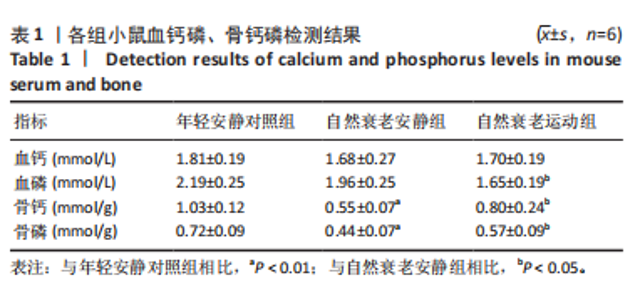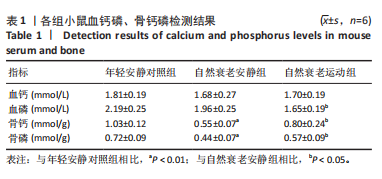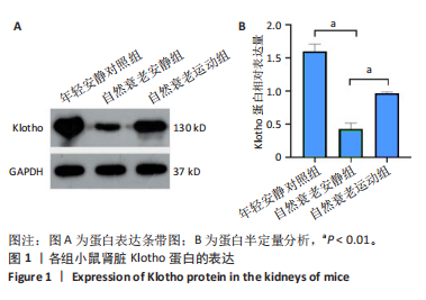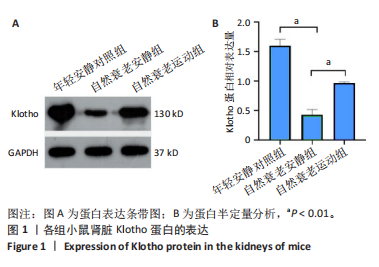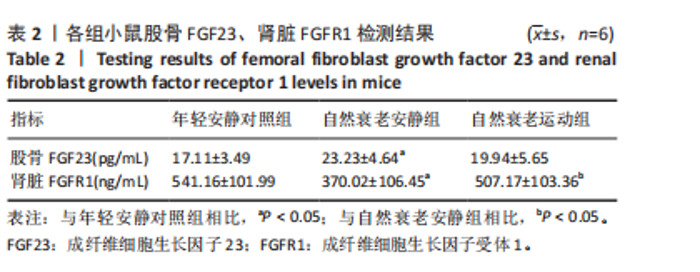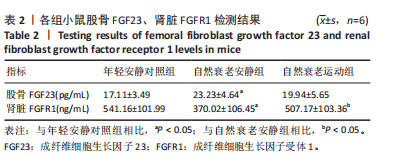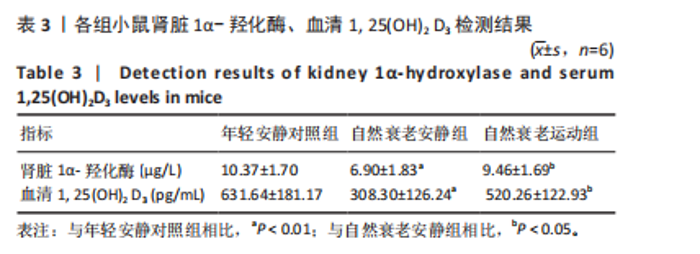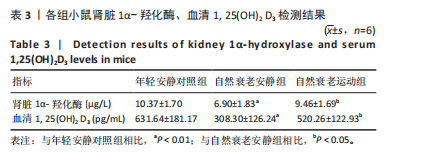[1] KURO-O M, MATSUMURA Y, AIZAWA H, et al. Mutation of the mouse klotho gene leads to a syndrome resembling ageing. Nature. 1997;390(6655):45-51.
[2] KUROSU H, YAMAMOTO M, CLARK JD, et al. Suppression of aging in mice by the hormone Klotho. Science. 2005;309(5742):1829-1833.
[3] CHEN G, LIU Y, GOETZ R, et al. α-Klotho is a non-enzymatic molecular scaffold for FGF23 hormone signalling. Nature. 2018;553(7689):461-466.
[4] BUCHANAN S, COMBET E, STENVINKEL P, et al. Klotho, Aging, and the Failing Kidney.Front Endocrinol (Lausanne). 2020;11:560.
[5] ARIMA T, SUGIMOTO K, TANIWAKI T, et al. Cartilage tissues regulate systemic aging via ectonucleotide pyrophosphatase/phosphodiesterase 1 in mice. J Biol Chem. 2024;300(1):105512.
[6] CHEN X, WEI Y, LI Z ,et al. Distinct role of Klotho in long bone and craniofacial bone: skeletal development, repair and regeneration. PeerJ. 2024;12:e18269.
[7] VASLI P, HOSSEINI M, NASIRI M, et al. Family-centered empowerment approach to optimize phosphate management among hemodialysis patients: an experimental study. BMC Nephrology. 2023;24(1):259.
[8] ZHOU C, SHI Z, OUYANG N, et al. Hyperphosphatemia and Cardiovascular Disease. Front Cell Dev Biol. 2021;9:644363.
[9] MIRONOV N, ATFI A, RAZZAQUE MS. Phosphate Burden and Organ Dysfunction. Frontiers in Aging. 2022;3:890985.
[10] TONELLI M, SACKS F, PFEFFER M, et al. Relation between serum phosphate level and cardiovascular event rate in people with coronary disease. Circulation. 2005;112(17):2627-2633.
[11] MARTIN A, QUARLES LD. Evidence for FGF23 involvement in a bone-kidney axis regulating bone mineralization and systemic phosphate and vitamin D homeostasis. Adv Exp Med Biol. 2012;728:65-83.
[12] SHIMADA T, KAKITANI M, YAMAZAKI Y, et al. Targeted ablation of Fgf23 demonstrates an essential physiological role of FGF23 in phosphate and vitamin D metabolism. J Clin Invest. 2004;113(4):561-568.
[13] FERRARO S, BIGANZOLI G, CALCATERRA V, et al. Fibroblast growth factor 23: translating analytical improvement into clinical effectiveness for tertiary prevention in chronic kidney disease. Clin Chem Lab Med. 2022;60(11):1694-1705.
[14] CHUDEK J, KOCELAK P, OWCZAREK A, et al. Fibroblast growth factor 23 (FGF23) and early chronic kidney disease in the elderly. Nephrol Dial Transplant. 2014;29(9):1757-1763.
[15] RODELO-HAAD C, SANTAMARIA R, MUNOZ-CASTANEDA JR, et al. FGF23, Biomarker or Target?. Toxins. 2019;11(3):175.
[16] CARDOSO AL, FERNANDES A, AGUILAR-PIMENTEL JA, et al. Towards frailty biomarkers: Candidates from genes and pathways regulated in aging and age-related diseases. Ageing Res Rev. 2018;47:214-277.
[17] BUSKERMOLEN J, VAN DER MEIJDEN K, FURRER R, et al. Effects of different training modalities on phosphate homeostasis and local vitamin D metabolism in rat bone. PeerJ. 2019;7:e6184.
[18] 李洪波. 基于kl/FGF-23信号通路探讨滋阴补肾法对衰老大鼠模型骨-肾内分泌轴的影响[D]. 武汉:湖北中医药大学,2016.
[19] LIM JH, KIM EN, KIM MY, et al. Age-associated molecular changes in the kidney in aged mice. Oxid Med Cell Longev. 2012;2012:171383.
[20] 张路遥.不同运动干预2型糖尿病模型小鼠的肾间质纤维化[J]. 中国组织工程研究,2023,27(2):200-207.
[21] 贾迎秀.有氧运动通过调控Klotho改善与衰老相关肾纤维化及机制研究[D].太原:山西大学,2022.
[22] CORRÊA HL, RAAB ATO, ARAÚJO TM, et al. A systematic review and meta-analysis demonstrating Klotho as an emerging exerkine. Sci Rep. 2022;12(1):17587.
[23] GATTINENI J, BATES C, TWOMBLEY K, et al. FGF23 decreases renal NaPi-2a and NaPi-2c expression and induces hypophosphatemia in vivo predominantly via FGF receptor 1. Am J Physiol Renal Physiol. 2009;297(2): F282-291.
[24] TAKASHI Y, FUKUMOTO S. Phosphate-sensing and regulatory mechanism of FGF23 production.J Endocrinol Invest. 2020;43(7):877-883.
[25] ZHANG L, QIN W. Research progress of fibroblast growth factor 23 in acute kidney injury. Pediatr Nephrol. 2023;38(7):2013-2022.
[26] HAN X, YANG J, LI L ,et al. Conditional Deletion of Fgfr1 in the Proximal and Distal Tubule Identifies Distinct Roles in Phosphate and Calcium Transport. PLoS One. 2016;11(2):e0147845.
[27] MUNOZ-CASTANEDA JR, HERENCIA C, PENDON-RUIZ DE MIER MV ,et al. Differential regulation of renal Klotho and FGFR1 in normal and uremic rats. FASEB J. 2017;31(9):3858-3867.
[28] 詹理睿. 基于miR-199b-5p/Klotho/FGF23通路探讨肾元颗粒对糖尿病肾病钙磷代谢的影响[D].武汉:湖北中医药大学,2018.
[29] MEYER MB, LEE SM, TOWNE JM, et al. In Vivo Contribution of Cyp24a1 Promoter Vitamin D Response Elements. Endocrinology. 2024;165(11):134.
[30] 董中亮, 任晓曼, 伞吉爽. 成纤维细胞生长因子23在肾脏和慢性肾脏病及其并发症中的作用及其机制[J]. 生理科学进展,2018,49(4):285-288.
[31] ANDERSON PH, O’LOUGHLIN PD, MAY BK, et al. Modulation of CYP27B1 and CYP24 mRNA expression in bone is independent of circulating 1,25(OH)2D3 levels. Bone. 2005;36(4):654-662.
[32] ZEHNDER D, HEWISON M. The renal function of 25-hydroxyvitamin D3-1alpha-hydroxylase.Mol Cell Endocrinol. 1999;151(1-2):213-220.
[33] NOONAN ML, CLINKENBEARD EL, NI P, et al. Erythropoietin and a hypoxia-inducible factor prolyl hydroxylase inhibitor (HIF-PHDi) lowers FGF23 in a model of chronic kidney disease (CKD).Physiol Rep. 2020;8(11):e14434.
[34] 陈媛鑫, 刘阗生. 维药祛湿健骨方防治绝经后骨质疏松症的作用机制[J].中国骨质疏松杂志,2024,30(7):1000-1005.
[35] RAY N, REDDY PH. Structural and physiological changes of the kidney with age and its impact on chronic conditions and COVID-19. Ageing Res Rev. 2023;88:101932.
[36] DYBIEC J, SZLAGOR M, MŁYNARSKA E, et al. Structural and Functional Changes in Aging Kidneys. Int J Mol Sci. 2022;23(23):15435.
[37] OWCZAREK B, ZIOMKIEWICZ A, ŁUKOWSKA-CHOJNACKA E. Has a High Dose of Vitamin D3 Impacted Health Conditions in Older Adults?-A Systematic Review and Meta-Analysis Focusing on Dose 100,000 IU. Nutrients. 2024; 16(2):252.
[38] HAMMAMI MM, YUSUF A. Differential effects of vitamin D2 and D3 supplements on 25-hydroxyvitamin D level are dose, sex, and time dependent: a randomized controlled trial. BMC Endocr Disord. 2017; 17(1):12.
|
